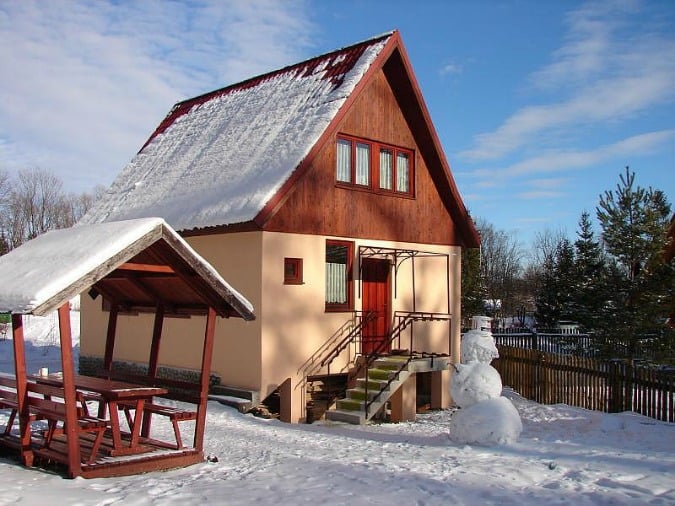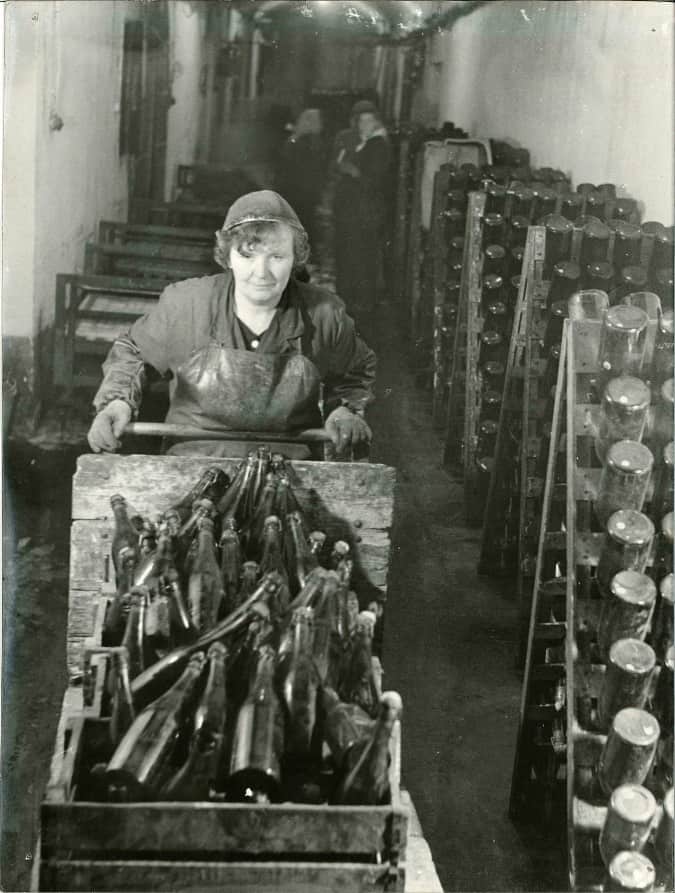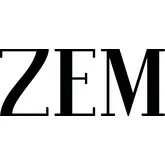Call It Something Else Entirely
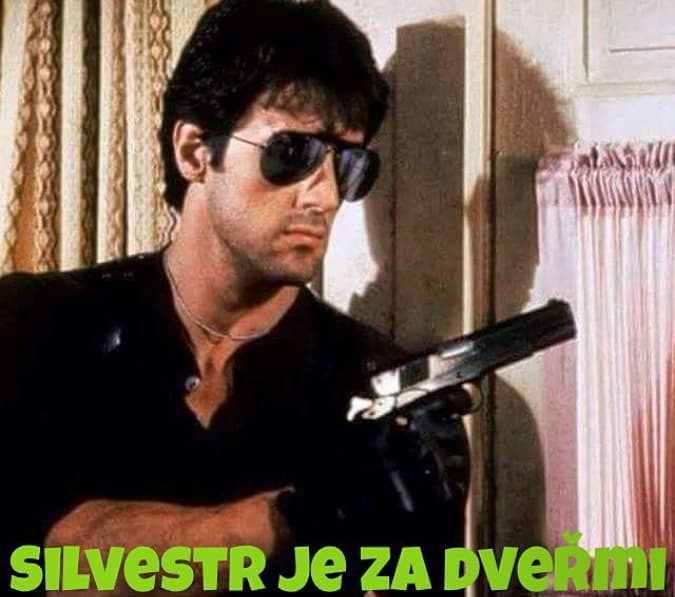
In the Czech Republic, New Year’s Eve is called Silvestr, for the anniversary of the consecration of Pope Sylvester I, a saint who served as Pope of the Western Church from 314 to 335. Since the adoption of the Gregorian calendar in 1582, the December 31st feast date has coincided with New Year’s Eve. (Italy, France, Poland, and numerous other Eastern European countries also refer to the last day of the year by this male name reminiscent of a certain movie action hero.)
Do Like the Locals and Get Out of Prague
If you’ve ever spent a New Year’s Eve in Prague or another large Czech city, you may have noticed that, outside of the center, things tend to get a little quiet. That’s because a number of Czechs citizens escape to a mountain ski cottage, or chata, to ring in the New Year. The tradition stems from the communist era when good workers got to spend the holiday at the company-owned cottage; people have kept the custom ever since and around this time of year all-inclusive trips can be had for a very good price. Popular destinations include Šumava and Krkonoše.
Raise a Glass of Czech-Made Bubbly
It’s probably the most well-known šampaňské in the Czech Republic and, with a 70-year tradition, the most longstanding. Bohemia Sekt was originally made in an abandoned brewery in Starý Plzenec. In 1945, the company had 10 employees, most of them women, who produced the company’s first sparkling wine. Known as a Black Widow, those early bottles of bubbly were opened by US troops to celebrate the liberation of Starý Plzenec—the liberators reportedly drank 37,000 bottles during the festivities!
Don’t Forget the Chlebíčky
Czech New Year’s Eve sees chlebíčky (open-faced sandwiches) with an array of toppings, their smaller siblings jednohubky (one-bite canapes),and other nuts and nibbles, including homemadebrambůrky (potato chips), adorn the buffet table. Historically Czechs ate vepřový ovar se strouhaným křenem a jablky (boiled pork head with grated horseradish and apples) at midnight; today pork is rather eaten on New Year’s Day along with a dish of čočka (lentils) topped with a fried egg, a symbol of prosperity and a pretty good hangover cure.
Personal Pyrotechnics? Fire Away!
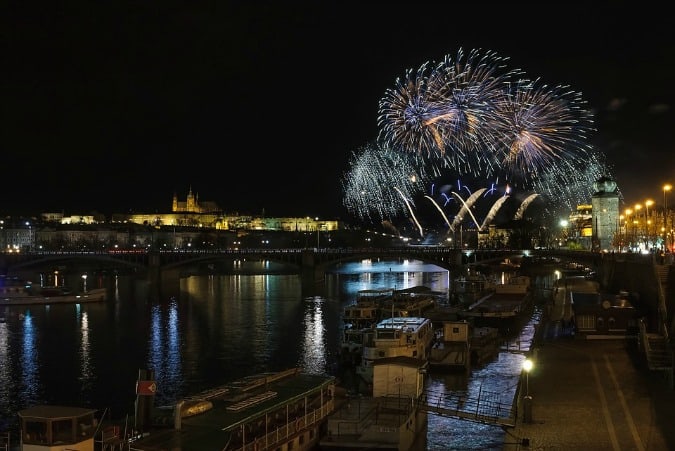
Bought in bulk and typically set off by tipsy Czechs, fireworks are an essential part of the midnight revelry. Displays take place in Prague on New Year’s Eve and New Year’s Day—this year the January 1 fireworks will commemorate 100 years of the Czechoslovak State and can best be viewed from Čechův bridge—but you’ll also find that families set off their own minor explosions in the garden following the countdown and toast. The custom is a modern one which replaced the rifles and cracking of whips of a hundred years ago, however, in recent years, regulations on personal fireworks usage have tightened.
Watch the World’s Most Low-Key TV Countdown
Homebodies who stay up to watch the Novoroční přípitek countdown on ČT1 will be rewarded with what is possibly the world’s most gentle greeting of the new year, the grinding, ticking and ringing out of a vintage clock followed by an angelic chorus performing the national anthem. Night owls will be treated to a swinging broadcast of Moravian folk tunes.
Do Nothing, Absolutely Nothing, On New Year’s Day

Czechs have a saying On New Year’s Day: “Jak na nový rok, tak po celý rok” which means something like “What you do on New Year’s day, you’ll do every day the next year.” That means that doing any work whatsoever is said to be bad luck. No cleaning the house or washing the dishes and really whatever you do, if you’re at all superstitious, don’t hang up laundry or you could experience personal unhappiness in the New Year.












 Reading time: 3 minutes
Reading time: 3 minutes 

